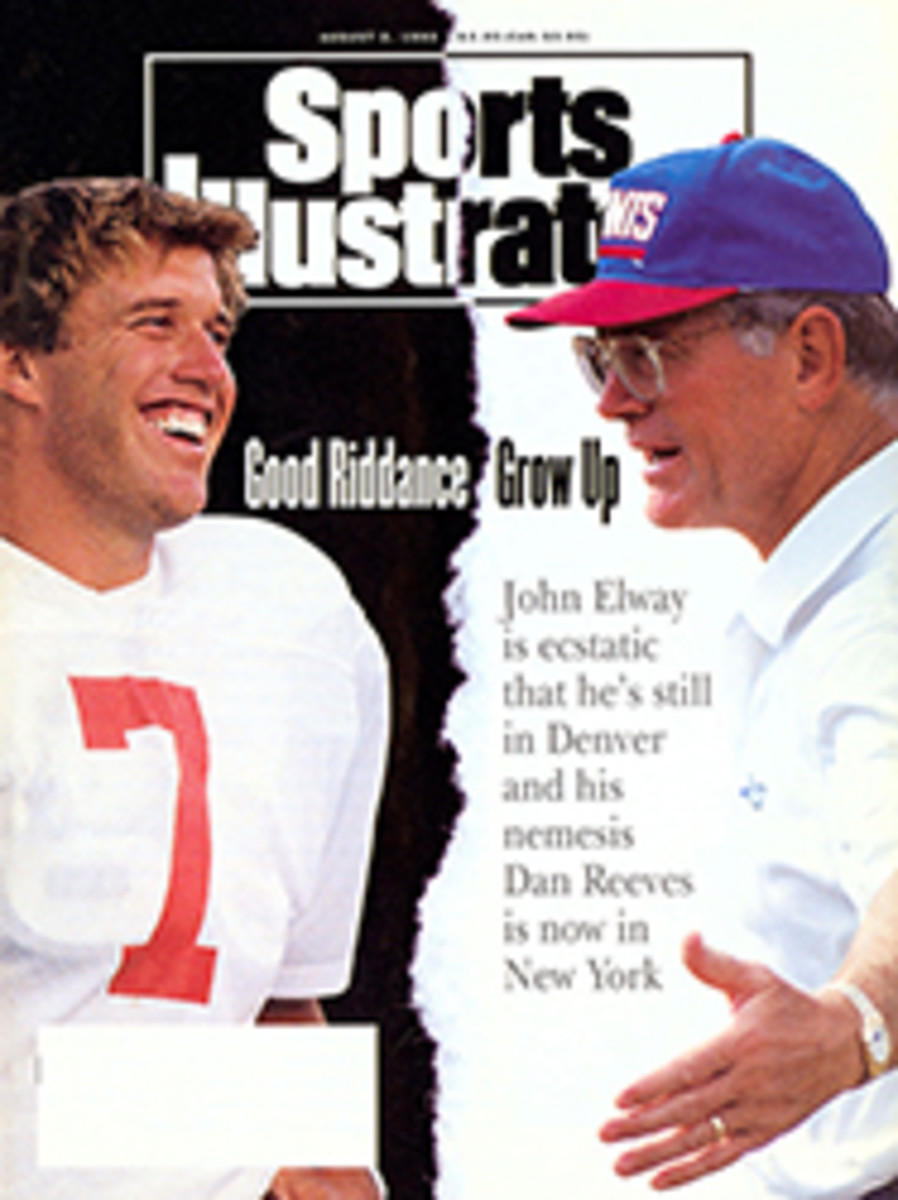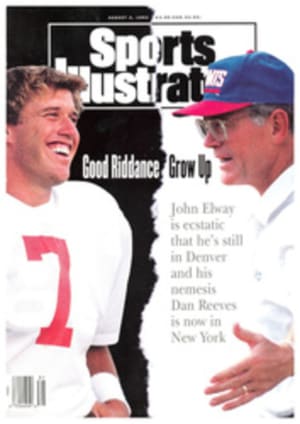
A Holdup in the Bronx
On Aug. 4, 1957, my grandfather took me by the hand to my first major league baseball game. This much I remember about the game: The New York Yankees beat the Cleveland Indians 5-2, and Mickey Mantle hit a ground-rule double. I will also never shake the feeling I had that day of entering a huge, magic castle, where indoors was outdoors and gigantic model trains rumbled by every so often.
The castle was Yankee Stadium, and it has never lost its magic for me. I have been back countless times since then, so many that I can trace my personal history using the Stadium to mark my place. I won't bore you with the early Hal Reniff years, but I did become a man there one cold January day in 1967, when I broke away from a high school field trip in Manhattan for a personal pilgrimage to the Stadium. I took the wrong subway, hiked halfway across the Bronx and, as a reward, found myself on the mound, unnoticed, throwing imaginary pitches to Al Kaline and Norm Cash.
I went to Yankee Stadium on my first date with my wife, and nowadays, we and our two sons go there often. To complete the circle, I took my grandfather by the hand to a game there not long before he died.
All those times, over all these years, I have never once felt threatened or uncomfortable in the shadows of Yankee Stadium. It is a fortress, not only for those who come to it, but for baseball itself as well. Inside, the game is safe from change, preserved as it was 70 years and several generations ago. The House That Ruth Built, DiMaggio Graced, Mantle Lifted and Reggie Rocked feels like home to me.
So pardon me while I hurl over the latest blackmail that Yankee owner George M. Steinbrenner III is using against the city and state of New York. My gate receipts are not what they should be, says the man whose team has a $486 million, 12-year cable television deal. The fans don 't come because of inadequate parking facilities and the public perception of the Bronx as an unsafe place, says the man who has his own jet and lives in Florida. Give me what I want, or I will move the team to New Jersey, says the man who owes $6.1 million in back rent to New York City, which owns the Stadium.
Steinbrenner has no shame, but then, New York politicians have no pride. Mayor David Dinkins, up for reelection, rolled over as if he were the Yankees' traveling secretary and said we must do something to keep the Yankees in New York City. Governor Mario Cuomo said that if the Bronx no longer pleases George, we could build him a park for no more than $1 billion on the lower West Side of Manhattan.
Maybe Steinbrenner's threat is just a ploy to wrest new concessions from the city; after all, he got a $73.5 million renovation of the Stadium 17 years ago after making similar noises. In truth the parking around the Stadium is pretty bad, and it would behoove both the Yankees and the city to open a train station nearby for the railroad commuters who pass by on their way to and from Manhattan. But the subway service to Yankee Stadium is remarkably good, and this "perception" of the area as being dangerous is racist hogwash. The police in that precinct have reported no robberies or violent crimes around the Stadium on game days, this year or last.
This time there seems to be a real vehemence to Steinbrenner's threat. Even though attendance was up 18.8% over last year, he proclaimed last week "a test week" for Yankee fans: If they didn't come out in sufficient numbers to see the Seattle Mariners and the California Angels, well, don't blame him if the team is playing in New Jersey after its lease runs out in 2002. Professor Steinbrenner flunked the class last Saturday, after a league-low 25,989 showed up for Friday night's game. The day the grade was given out, 44,786 fans were at the Stadium for Old-Timers' Day. George wasn't there, though, because he was in San Antonio for a U.S. Olympic Committee function. Or maybe he just didn't want to let the Yankee tradition, the cheers of the crowd, Bob Sheppard's voice or the sight of the facade cloud his judgment.
You get the feeling that what George really wants is his own Camden Yards, his own trophy ballpark that he can show off to his friends and fellow owners, the way friend and fellow owner Jerry Reinsdorf shows off his new Comiskey Park, a ballpark he exacted from the state of Illinois after threatening to move the Chicago White Sox to St. Petersburg, Fla. George wants A House That Ruthless Built.
These are perilous times, baseball fans. The futures of three grand old ballparks—Fenway Park, Tiger Stadium and Yankee Stadium—are being threatened. One U.S. representative, David Benior (D., Mich.), has introduced a bill that would designate those stadiums, and Wrigley Field, as national parks to protect them from the wrecking ball.
But that bill, even if it became law, would not be enough. Those stadiums must be kept not just alive, but humming, with real major league teams playing real major league games. Those four parks are the last four threads of baseball's essential string to the past. If baseball had any guts—heh, it doesn't even have a commissioner—the owners of the Yankees, the Chicago Cubs, the Boston Red Sox and the Detroit Tigers would be forbidden to abandon their heritages unless they could prove they had no choice.
It'll never happen, though. One by one, the greedy bastards will cut the threads. And when it's Yankee Stadium, I'll curse the wretched owner who destroyed my hope that someday a grandchild would take me there.
PHOTO
NINA BARNETT

